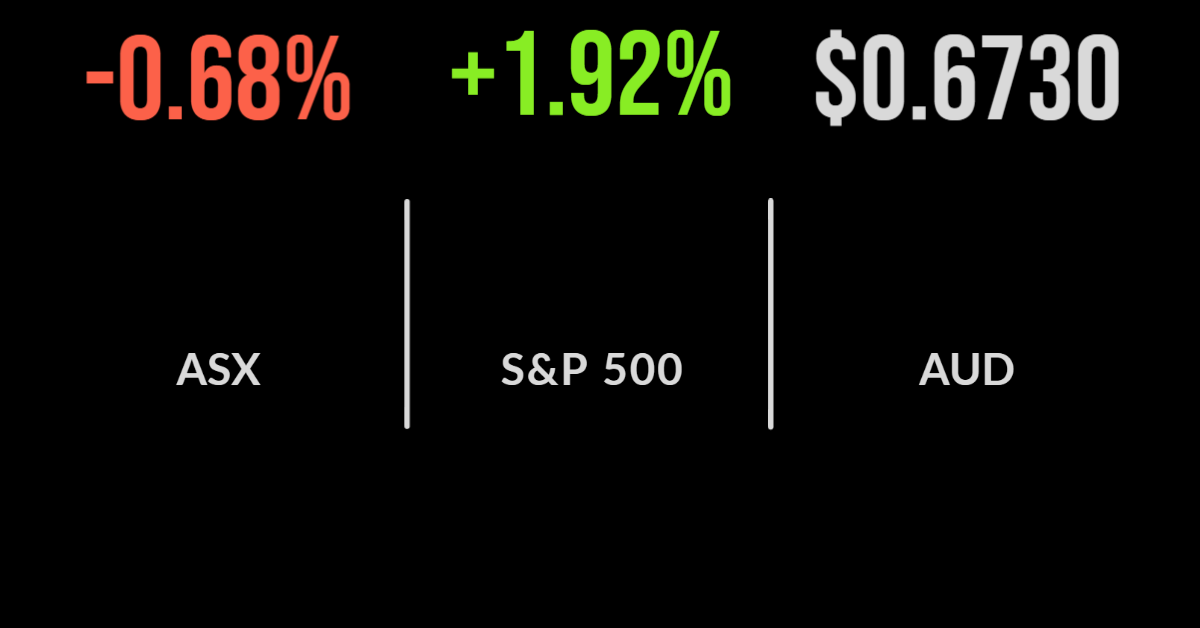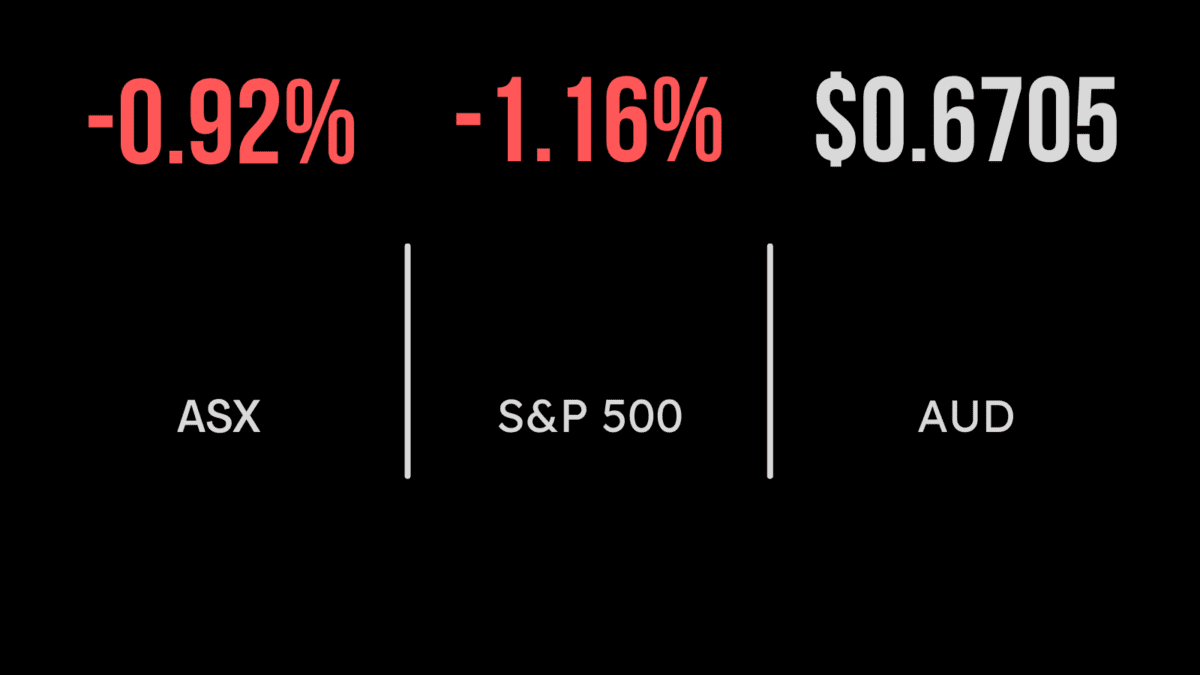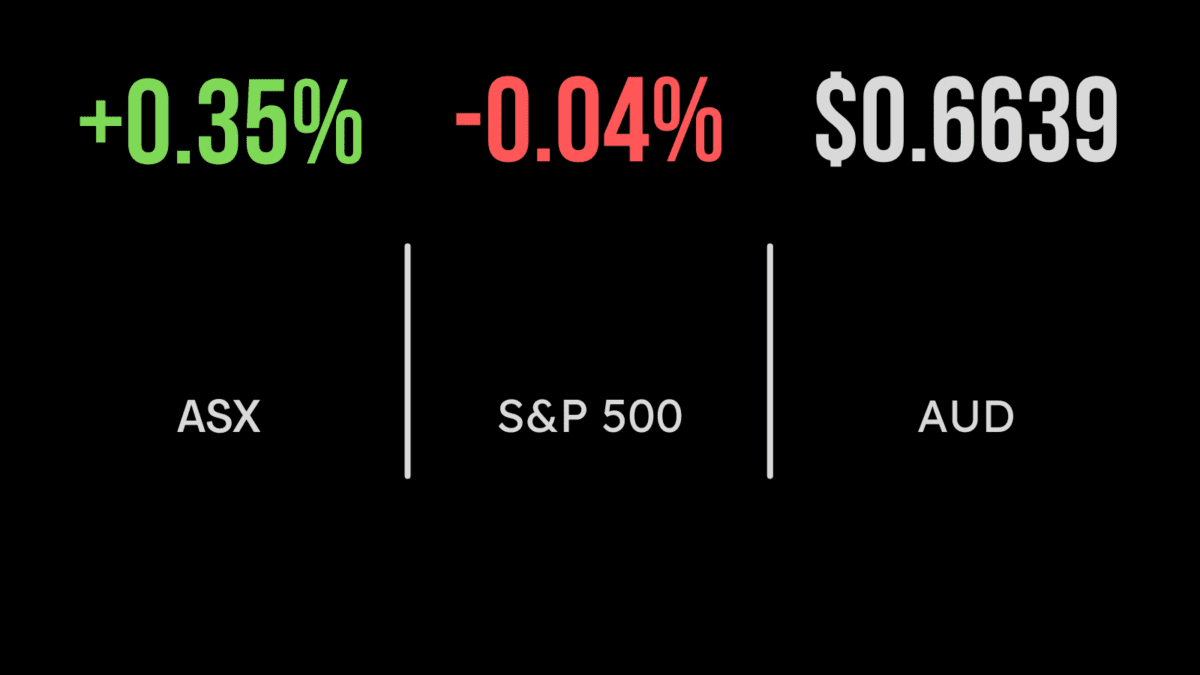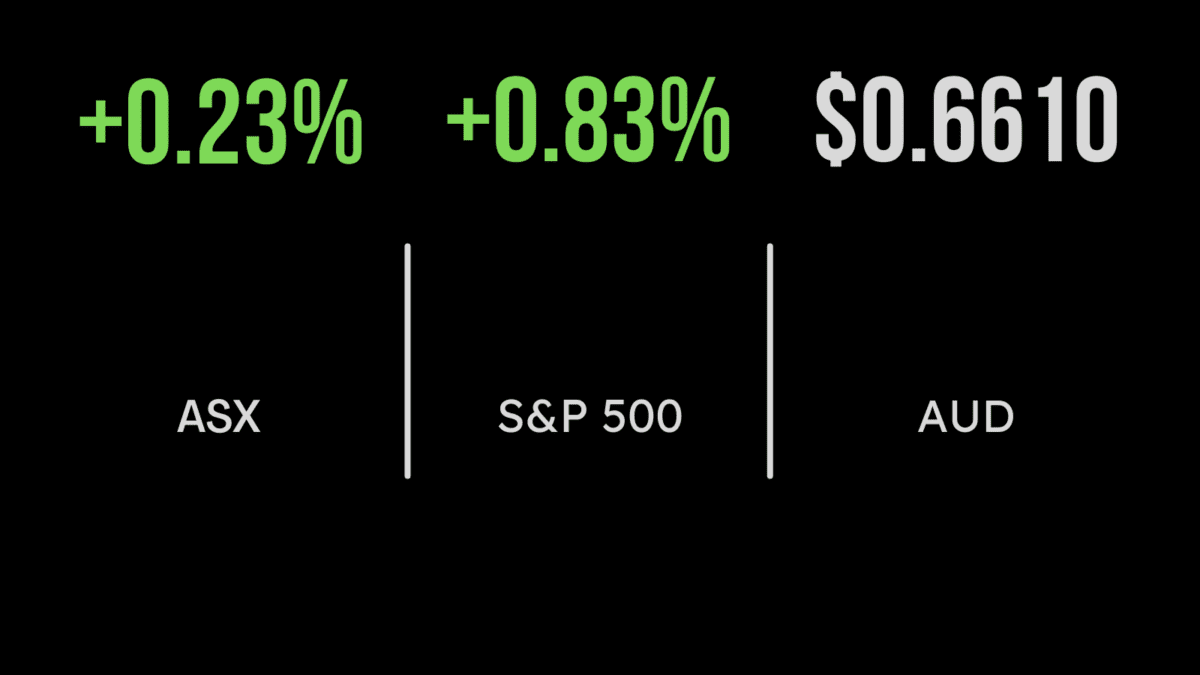Aussie market falls on commodity weakness, Pendal outflows jump, coal miners surge
The local market finished the week on a negative tone, falling 0.7 per cent and taking the five day loss for the S&P/ASX200 to 1.1 per cent.
The biggest driver on Friday was a broad selloff in commodity markets following a weak economic growth result in China, the sector fell 3.2 per cent.
Iron ore continues to fall, dragging the likes of BHP (ASX: BHP) and Rio Tinto (ASX: RIO) down 3.5 and 2.9 per cent respectively with the latter reporting iron ore production in line with prior guidance but concerns about growing costs and weaker supply.
The staples and healthcare sectors both added more than 1 per cent on Friday, with gains of 1.2 and 3.5 per cent across the week.
Woolworths (ASX: WOW) and Metcash (ASX: MTS) both gained, adding 0.9 and 2.7 per cent as investors flocked to more defensive businesses amid another surge in COVID-19 cases.
Fund manager Pendal (ASX: PDL) was the lowlight, falling 7.8 per cent after the company reported significant outflows from their value-oriented funds.
The manager lost $14 billion in assets, of which $4.2 billion came in the form of withdrawals. On the positive side was WiseTech (ASX: WST) with the company gaining 7.2 per cent after upgrading earnings guidance to a 50 per cent increase on 2021 levels.
Over the week coal miners New Hope (ASX: NHC) and Whitehaven (ASX: WHC) gained 16 and 11 per cent respectively with EML and Viva Energy losing 20 and 18 per cent.
US market jumps on bank profits, recession chances increase, Fed backs down on 1 per cent hike
A strong finish to the week in US markets wasn’t enough to offset losses over the five days with the Dow Jones falling 0.2, the S&P500, 0.9 and the Nasdaq 1.6 per cent despite gains of 2.2, 1.9 and 1.8 per cent on Friday.
Mixed economic data continues to confuse the market with retail sales jumping 1 per cent in June, but primarily due to the higher cost of fuel and food, while unemployment claims hit their highest point for the year.
On a positive note, inflation expectations have dipped to the lowest level in a year, which coincided with commentary from the Federal Reserve suggesting a 1 per cent hike was unlikely.
The standout on Friday was Citigroup (NYSE: C) with the bank jumping by more than 13 per cent and sending the financial sector to strong gains.
Revenue jumped 11 per cent and profit by 20 per cent due to far stronger than expected treasury income.
This pushed the entire banking sector higher and was enough to offset bad news on the Chinese economy.
The giant economy contracted 2.6 per cent in the second quarter, nearly double the 1.5 per cent expected, with first half GDP of just 2.5 per cent growth.
Commodity reversal, crypto collapse continues, is the worst already over? Commodity had been talked up as the perfect hedge against inflation throughout 2021 with many managers piling into the sector following the ‘momentum’ trade.
This trend is starting to bite as the realisation that higher interest rates driven by inflation concerns may actually result in an economic slowdown, hitting commodity prices in the process.
This was reflected in a continued fall in iron ore this week but more so copper, which hit a near two year low despite being one of the most supply-challenged commodities.
The collapse of the Celsius Network, a crypto and defi exchange has continued to flush out of the excesses in the crypto and meme stock market.
There are concerns of a US$1.8 billion deficit between the amount of crypto held in accounts and backed by the balance sheet.
Clearly regulators have sat on their hands in relation to consumer protection in the sector.
The biggest question of all is whether the worst is over for markets, with even the threat of a 1 per cent interest rate hike not enough to send the market lower.










